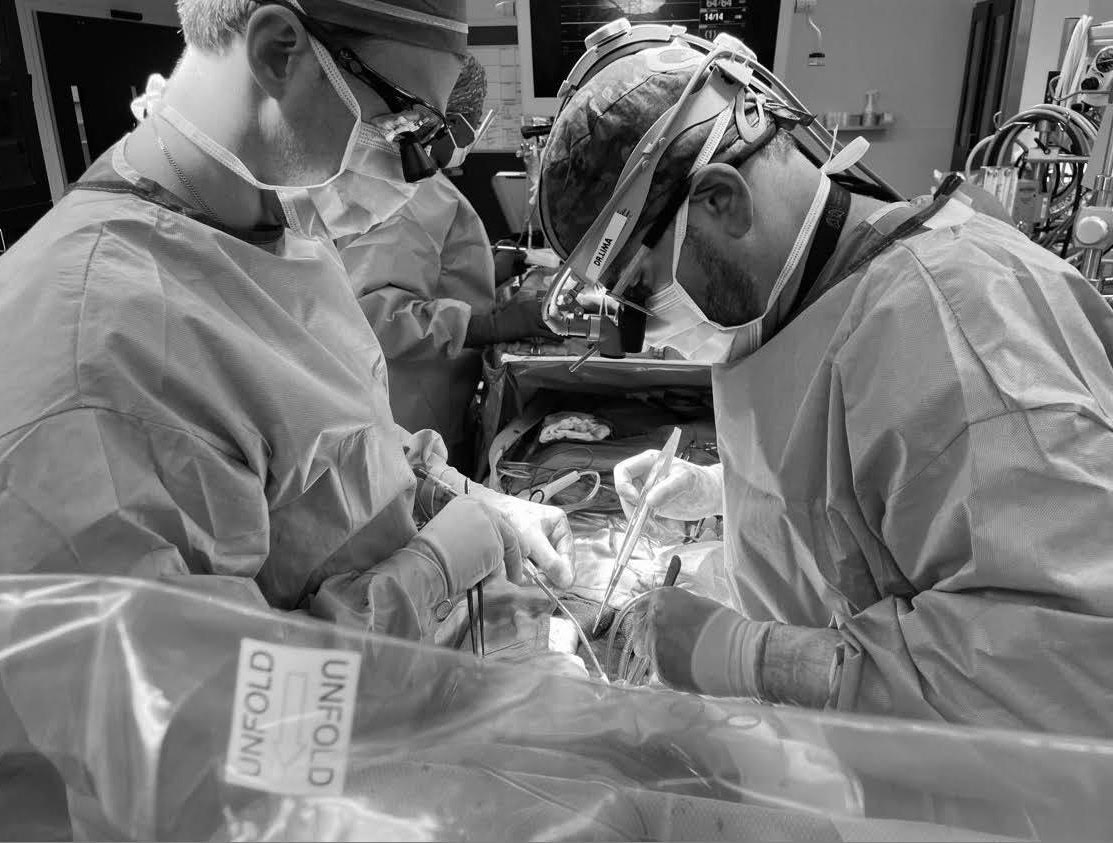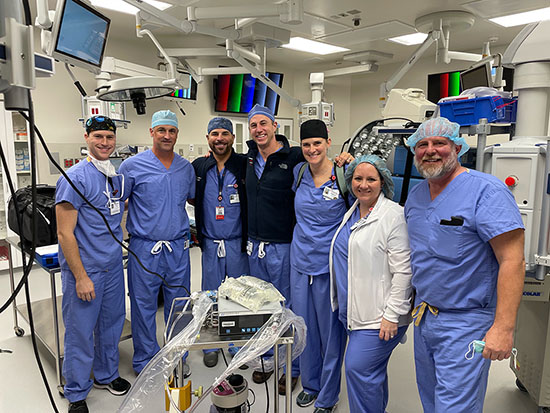Texas PA Helps Expand Donor Pool for Heart Transplants
PA Timothy Wombacher Assisted in the First DCD Cardiac Transplant in Texas
By Dave Andrews
February 18, 2022

Approximately 3,500 people in the United States are on the waiting list for a heart transplant, according to the United Network of Organ Sharing (UNOS). Unfortunately, an estimated 20% of those people will die before a viable heart becomes available.
Because heart procurement has traditionally been limited mostly to donors who are declared brain dead, many healthcare professionals are exploring new ways to expand the donor pool. Donation after circulatory death (DCD) is one such technique that is slowly gaining traction among cardiac transplant programs.
Timothy Wombacher, PA-C, who practices in cardiothoracic surgery at Medical City Healthcare in Dallas, Texas has dedicated most of his career to cardiovascular disease and can attest to the value of DCD through firsthand experience. In December 2021, he assisted in the first DCD cardiac transplant performed in the state of Texas.
“It’s always an incredible experience to provide a patient with a life-saving organ transplant,” said Wombacher, who has been practicing as a PA since 2012. “But this was especially exciting because it was such a rare opportunity. Hearts are not often available for DCD, but the right organ became available at the right time and place. All of the stars just seemed to align for the patient.”
[Grow your network, find a mentor, and more – join or renew your membership today]
Gradual growth
DCD adoption has been much slower in the United States than in many other countries around the world. Much of that is because DCD cardiac transplantation requires more equipment and a larger medical team compared to the vast majority of transplants that use donations after brain death (DBD). A typical DCD team will include at least two perfusionists, three nurses, and two surgeons or a surgeon and a PA.
“Without a doubt, [the growth of DCD cardiac transplantation] will take some time simply because of the dynamics of the procedure and the number of people involved,” Wombacher said. “But in regions like ours in Dallas-Fort Worth, DCD will dramatically expand our donor pool by up to 30% and enable us to save many more lives.”
DCD has long been a routine procedure for harvesting other organs such as livers, kidneys, and lungs. But the process of withdrawing life support can put the heart at a higher risk of sustaining traumatic injury. So in recent years, some transplant teams have started using new perfusion techniques—either by normothermic regional perfusion within the donor’s chest or by putting the heart on an XVIVO pump—to quickly and accurately assess the organ’s usability.
“Like with many other things that are new or different, there will often be a large portion of people who are wary of new approaches or reluctant to try procedures,” said Brian Lima, MD, surgical director of heart transplantation and mechanical circulatory support at Medical City Heart Hospital. “DCD [for cardiac transplantation] requires a leap of faith, if you will. But we are increasingly seeing data in support of it, and I see it becoming much more routine in the near future.”

Timing and teamwork
While DBD procedures allow the medical team to work at a slower pace and in a more controlled setting, DCD is more about speed and efficiency, says Lima.
“It’s a challenging procedure because every second matters—from the moment of the first skin incision, to going on pump in a matter of five minutes,” Lima said. “Everyone needs to work together in an extremely meticulous manner so that no time is wasted. That’s why Tim’s superb attention to detail has been critical to our success.”
Prior to joining Lima’s team, Wombacher had been working for several years for Cardiac Surgery Associates at Advocate Aurora Lutheran General Hospital in Chicago. While there, he gained invaluable experience working alongside some of the highest-volume cardiac surgeons in the country.
“Tim has always been one of the hardest workers on the team, constantly willing to pitch in and take on new roles,” said Susan O’Mara, DNP, an acute care clinical nurse specialist at Advocate Lutheran General Hospital and close colleague of Wombacher’s for several years. “With his extensive skillset and the way he works so efficiently—always on top of his game—he quickly earned the respect of his patients and fellow providers.”
Unique opportunities
Wombacher’s solid reputation and experience were the initial reasons Lima actively recruited him to Medical City Hospital. O’Mara said she was sad see Wombacher leave, but she knew it was in his nature to continually pursue new challenges and opportunities.
“I’ve always been drawn to teams and programs that are pushing the envelope of what’s possible,” Wombacher said. “It’s great to be a part of a team and a program that is doing just that and finding new ways to give life to people who might otherwise not make it.”
Wombacher says he has been fortunate throughout his career to work in places where PAs are held in high regard by the other providers—especially by the physicians. And in his unique role, he knows he’s found his true calling.
“Once I made the decision to go to PA school, I never looked back,” Wombacher said. “I feel so lucky to have chosen the right profession at the right time because PAs are increasingly moving to the forefront of the medical team, progressively expanding their roles and responsibilities. With so much flexibility and all the various specialties you can get into, the opportunities for PAs are endless.”
You May Also Like:
Back to Earth: First PA, Youngest American Reflects on Historic Flight to Space
Two PAs Use Genetics and Precision Medicine to Provide Answers and Develop Plans for Patients
PA Student Proves Tenacity, Mental Balance Lead to Paralympic Gold
Thank you for reading AAPA’s News Central
You have 2 articles left this month. Create a free account to read more stories, or become a member for more access to exclusive benefits! Already have an account? Log in.



